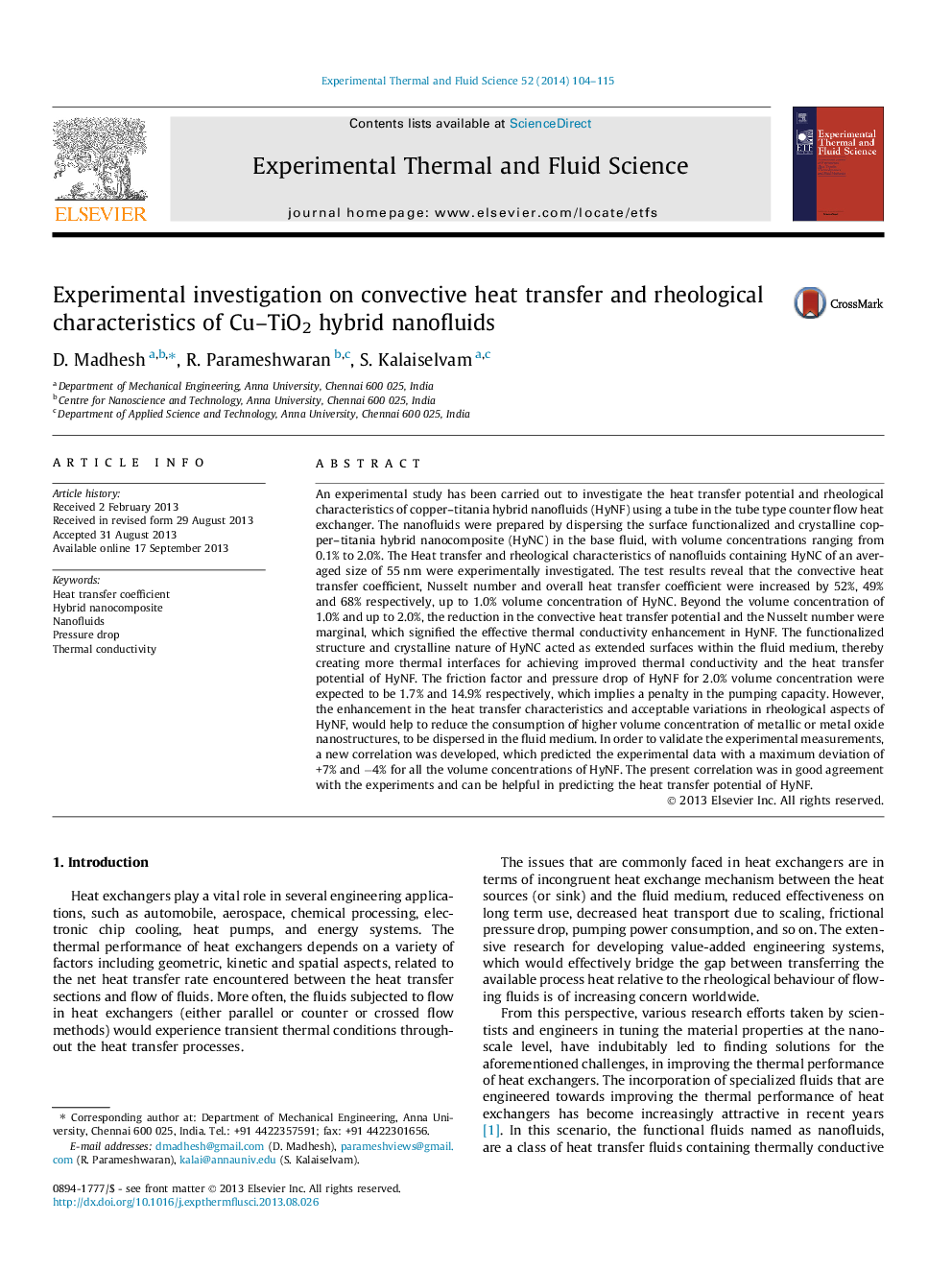| کد مقاله | کد نشریه | سال انتشار | مقاله انگلیسی | نسخه تمام متن |
|---|---|---|---|---|
| 651365 | 1457424 | 2014 | 12 صفحه PDF | دانلود رایگان |

• Surface functionalized and stabilized HyNC dispersed in fluid without surfactant.
• Convective heat transfer coefficient increased by 52% for hybrid nanofluids.
• Particulate thermal diffusion rate influenced by fluid density and flow viscosity.
• Heat transfer rate reduced at higher flow frictional pressure drop of nanofluids.
• Enhanced heat exchanger performance is possible at lower particulate fractions.
An experimental study has been carried out to investigate the heat transfer potential and rheological characteristics of copper–titania hybrid nanofluids (HyNF) using a tube in the tube type counter flow heat exchanger. The nanofluids were prepared by dispersing the surface functionalized and crystalline copper–titania hybrid nanocomposite (HyNC) in the base fluid, with volume concentrations ranging from 0.1% to 2.0%. The Heat transfer and rheological characteristics of nanofluids containing HyNC of an averaged size of 55 nm were experimentally investigated. The test results reveal that the convective heat transfer coefficient, Nusselt number and overall heat transfer coefficient were increased by 52%, 49% and 68% respectively, up to 1.0% volume concentration of HyNC. Beyond the volume concentration of 1.0% and up to 2.0%, the reduction in the convective heat transfer potential and the Nusselt number were marginal, which signified the effective thermal conductivity enhancement in HyNF. The functionalized structure and crystalline nature of HyNC acted as extended surfaces within the fluid medium, thereby creating more thermal interfaces for achieving improved thermal conductivity and the heat transfer potential of HyNF. The friction factor and pressure drop of HyNF for 2.0% volume concentration were expected to be 1.7% and 14.9% respectively, which implies a penalty in the pumping capacity. However, the enhancement in the heat transfer characteristics and acceptable variations in rheological aspects of HyNF, would help to reduce the consumption of higher volume concentration of metallic or metal oxide nanostructures, to be dispersed in the fluid medium. In order to validate the experimental measurements, a new correlation was developed, which predicted the experimental data with a maximum deviation of +7% and −4% for all the volume concentrations of HyNF. The present correlation was in good agreement with the experiments and can be helpful in predicting the heat transfer potential of HyNF.
Figure optionsDownload as PowerPoint slide
Journal: Experimental Thermal and Fluid Science - Volume 52, January 2014, Pages 104–115